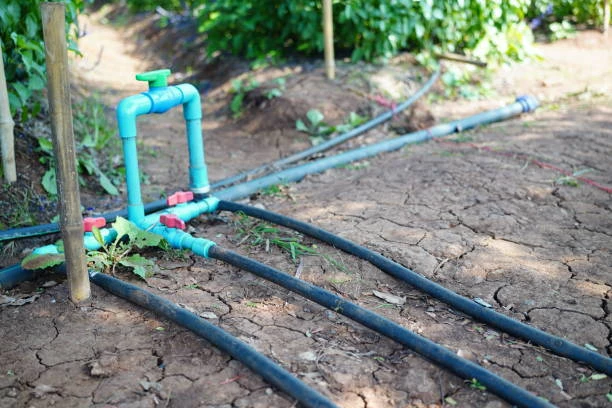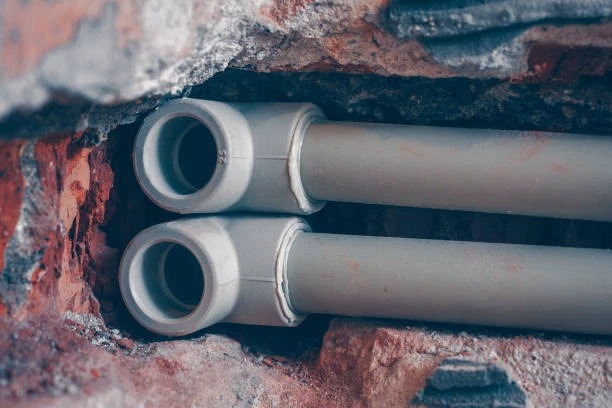Introduction
Water is one of the planet’s most vital resources, yet it is often taken for granted. One of the biggest challenges in water management today is the detection and repair of leaky pipes in water distribution systems. These leaks can lead to significant water wastage, often unnoticed for long periods, and can even damage infrastructure. Fortunately, cutting-edge artificial intelligence (AI) tools are transforming the way we address this issue. Using advanced sound technology, AI can now pinpoint the exact location of leaky pipes, helping utility companies and municipalities save billions of liters of drinking water and reduce repair costs. In this article, we’ll explore how AI-driven sound detection works, the advantages it offers, and the impact it can have on global water conservation efforts.
The Importance of Addressing Pinpoint Leaky Pipes
Before diving into the technology, it’s important to understand the scale and impact of leaky pipes. According to the World Bank, around 30% of the water distributed through urban pipes is lost due to leaks. These leaks often occur underground and remain hidden from sight, making detection and repair particularly challenging. In many cities, old infrastructure with aging pipes is a major contributor to water loss.
Leaks not only waste valuable drinking water but also result in increased operational costs for water utilities. The longer a leak goes undetected, the more expensive it becomes to repair, especially when significant water damage is involved. Addressing these issues is essential for ensuring the sustainable use of water resources, particularly in regions facing water scarcity.
Traditional Methods of Pinpoint Leaky Pipes Detection
Historically, detecting leaky pipes has been a labor-intensive and time-consuming process. Water utilities would typically rely on manual inspection, which includes visual surveys, listening for sounds of escaping water, and the use of equipment like pressure sensors or acoustic sensors. While these methods can be effective, they often require extensive personnel and can miss small, hidden leaks.
In some cases, utilities may need to close off sections of pipes, reducing the service available to consumers and increasing operational downtime. Furthermore, manual leak detection can be inaccurate, leading to unnecessary repairs and disruption. As cities grow and infrastructure ages, the need for a more precise and efficient leak detection method becomes even more critical.
The Role of AI in Pinpoint Leaky Pipes Detection
This is where AI technology comes into play. By harnessing the power of machine learning and sound recognition, AI tools can significantly improve the accuracy, efficiency, and speed of leak detection. Here’s how it works:
- Sound Wave Detection: Leaky pipes produce unique sounds when water escapes under pressure. The sound frequencies and patterns are often distinct from the normal flow of water. Advanced AI systems can capture these sounds using sensors placed along the water distribution network.
- Data Collection and Analysis: These sensors are strategically installed at various points along the pipeline. As the sound waves travel through the pipes, they are captured by microphones and transmitted to an AI system. The AI uses machine learning algorithms to analyze the data, identify irregularities, and distinguish between normal sounds and those caused by leaks.
- Pinpointing the Leak Location: By analyzing the acoustic data in real-time, the AI system can accurately locate the source of the leak. This is done by comparing the time it takes for sound waves to reach multiple sensors along the pipeline, using a process known as triangulation. The more sensors installed, the more precise the AI can be in determining the exact location of the leak.
- Automated Alerts and Reports: Once a leak is detected, the AI system automatically sends alerts to utility operators, along with the precise coordinates of the leak. This allows teams to deploy repair crews quickly and efficiently, reducing downtime and minimizing water loss.
Advantages of Using AI for Pinpoint Leaky Pipes Detection
The use of AI to detect leaky pipes offers a wide range of benefits for both water utilities and consumers. Some of the most significant advantages include:
- Early Detection of Leaks: One of the main benefits of AI-based leak detection is the ability to identify leaks early, before they result in significant water loss. This proactive approach can help utilities save millions of liters of water and prevent costly repairs.
- Non-Invasive Monitoring: Traditional methods of leak detection often require invasive procedures, such as digging up sections of the pipe to check for leaks. With AI, the process is non-invasive, as it relies on sensors and sound waves, allowing utilities to detect and locate leaks without disrupting service.
- Improved Accuracy: AI-powered systems are far more accurate than human detection methods. The ability to distinguish between different sound frequencies allows the system to detect even small, hidden leaks with high precision.
- Cost Savings: By detecting leaks early, utilities can reduce the need for large-scale repairs, saving both money and time. Moreover, the AI system’s ability to automatically detect and locate leaks reduces the labor costs associated with manual inspections and the potential for human error.
- Minimized Disruptions: AI tools can pinpoint the exact location of a leak, allowing you to dispatch repair teams immediately to address the problem. This minimizes service disruptions and reduces the impact on consumers.
- Data-Driven Decision Making: AI systems provide utilities with valuable insights into the condition of their pipelines. Over time, these systems can generate reports and trends that help utilities make informed decisions about maintenance and future investments in infrastructure.

Global Impact on Water Pinpoint Leaky Pipes Conservation
The impact of AI-powered leak detection on water conservation cannot be overstated. According to the United Nations, by 2025, two-thirds of the world’s population may face water scarcity. Efficient water management practices, such as using AI to detect and fix leaks, are essential in addressing this global crisis.
By reducing water loss due to leaks, AI technology helps utilities deliver more water to communities while using fewer resources. This is especially important in regions where access to clean, safe drinking water is limited. Furthermore, AI can also assist in the management of other water resources, such as wastewater treatment, further contributing to water conservation efforts.
Challenges and Considerations in Pinpoint Leaky Pipes
While AI offers many advantages in leak detection, there are some challenges and considerations to keep in mind:
- Initial Investment: The installation of sensors and the integration of AI systems into existing water infrastructure can require a significant upfront investment. However, the long-term savings in water conservation and maintenance costs often outweigh this initial expense.
- Data Privacy and Security: As with any AI-based technology, there are concerns regarding data privacy and security. You need to properly protect the information collected by sensors to ensure that no one misuses or tampers with it.
- Adaptability to Different Environments: AI leak detection systems must be adaptable to different geographic and environmental conditions. For example, pipes in older infrastructure may require different approaches than newer systems.
- Reliability of Sensors: The accuracy of AI-based systems is largely dependent on the reliability of the sensors used. Poor-quality sensors can lead to false positives or missed leaks, undermining the effectiveness of the technology.
The Future of AI in Water Pinpoint Leaky Pipes Management
Looking ahead, the role of AI in water management will only continue to grow. Beyond leak detection, AI is set to optimize water distribution, reduce waste, and improve the sustainability of water usage worldwide. With advancements in data analytics and machine learning, AI systems will become even more precise, reliable, and integrated into smart city infrastructure.
As the technology evolves, it may become more affordable and accessible to municipalities of all sizes, enabling worldwide implementation of AI-based leak detection.
Conclusion
AI technology has the potential to revolutionize the way we detect and manage leaky pipes, saving precious drinking water and reducing the environmental and economic costs associated with water wastage. By using sound waves and machine learning, AI systems can identify leaks early, minimize service disruptions, and ultimately contribute to a more sustainable and efficient water distribution network. As water scarcity becomes an increasingly urgent global issue, the adoption of AI-driven solutions will be a critical step in addressing the challenges of water conservation and management.
Frequently Asked Questions (FAQ)
1. How does AI detect leaky pipes?
AI detects leaky pipes by analyzing sound frequencies emitted by escaping water. Sensors placed along the pipeline capture these sound waves, and AI algorithms process the data to identify irregularities indicative of a leak. The exact location of the leak can then be pinpointed using triangulation.
2. What are the main benefits of using AI for leak detection?
The main benefits include early detection of leaks, non-invasive monitoring, improved accuracy, cost savings, and minimized service disruptions. AI also provides data-driven insights that help utilities make informed decisions about maintenance and infrastructure investment.
3. Can AI detect small or hidden leaks?
Yes, AI is highly effective in detecting small or hidden leaks. The advanced sound recognition capabilities allow the system to distinguish between normal water flow and the sounds produced by leaks, even if the leaks are minor.
4. How can AI help with water conservation?
AI helps conserve water by quickly identifying and addressing leaks, which can save millions of liters of water. This technology reduces water wastage, especially in regions where water scarcity is a growing concern.
5. Are there any challenges to implementing AI for leak detection?
Challenges include the initial investment required for sensor installation, ensuring data privacy and security, and ensuring the technology is adaptable to different environments and pipe conditions. Additionally, sensor reliability is key to the system’s overall effectiveness.


















